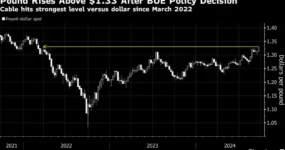President Joe Biden and Vice President Kamala Harris have repeatedly touted on the campaign trail their efforts to lower drug prices, including a $2,000 limit on Medicare enrollees’ out-of-pocket prescription costs that starts in January. But what they haven’t talked about is that the cap has prompted insurers to propose hiking the drug plan premiums of millions of Medicare beneficiaries.
The final Part D plan premiums are scheduled to be released this month. To avoid a massive spike just weeks before the presidential election, the Biden administration is offering insurers hefty new subsidies that could total about $5 billion next year. The move, which did not need congressional approval, has sparked criticism from several Republican lawmakers.
Medicare beneficiaries will be able to start selecting plans in mid-October, when the annual open enrollment period kicks off. About 13.3 million people are enrolled in Part D plans and pay $43 a month, on average, for coverage in 2024, according to KFF.
The increase in premiums was not unexpected. It stems from changes to the Medicare drug benefit contained in the Democrats’ 2022 Inflation Reduction Act. In addition to the $2,000 limit, the law requires insurers to be on the hook for more of the costs once enrollees hit the catastrophic coverage phase above the cap.
Starting in January, insurers will cover 60% of drug costs, with Medicare and drug manufacturers splitting the remaining 40% for brand name drugs and Medicare picking up the full 40% for generic medications. But prior to the IRA’s changes, plans were responsible for only 15% of the costs, with beneficiaries shelling out 5% and Medicare covering 80%.
“The plans will, just because of the design, have so much more liability and responsibility,” said Angela Lamari, an analyst at Capstone, a Washington-based firm that consults with investors and corporations on public policy. “So the bids this year were significantly higher than any year before.”
The subsidy program, which is part of a Medicare demonstration project to test changes in payments or reimbursement methods, will provide participating insurers with an extra $15 per member per month. Insurers will limit monthly premium increases to $35 from the prior year. (The Inflation Reduction Act already somewhat curbed their ability to hike premiums.) Plus, Medicare will minimize the exposure insurers face from beneficiaries with high drug expenses.
“If they end up with a larger-than-normal number of high-risk patients, they will get additional subsidization from the government for the costs,” James Capretta, senior fellow at the right-leaning American Enterprise Institute, said of insurers.
These protections are on top of a large increase in Medicare’s average direct subsidy to Part D plans of nearly $143 for 2025, up from less than $28 this year. That reflects a shift to Medicare paying insurers up front for providing basic drug benefits, rather than paying them retroactively to cover high-cost enrollees in the catastrophic coverage phase.
The demonstration program, which will run up to three years, doesn’t apply to drug coverage within Medicare Advantage plans, which offer a broader array of health coverage and can more easily curtail premium increases by changing other benefits or drawing on other government funding, experts said.
The Centers for Medicare and Medicaid Services noted in a press release that the Inflation Reduction Act made the most significant changes to the drug program since it began in 2006. Providing more premium stability may improve the predictability of plan offerings for enrollees and “improve the efficiency of the transition” for both beneficiaries and insurers, the agency said, adding that it launched similar demonstrations in the past, including in the years after the Part D program began in 2006.
“The Part D Premium Stabilization Demonstration is about making sure people with Medicare continue to save money on their drug costs while having stable, affordable choices of prescription drug plans,” the agency said in a statement. “It is also consistent with other demonstrations that CMS has conducted in the past to address transitional issues associated with the implementation of major changes to the Medicare program.”
Republican outrage
GOP lawmakers are pointing to the Biden administration’s move as another example of the failure of the Inflation Reduction Act, which many Republicans have said they want to repeal. They argue that the law could make it harder for senior citizens to afford and access medications and that it will cost the federal government billions to address the IRA’s deficiencies.
“One of @POTUS’ signature domestic achievements is set to cause a significant spike in Medicare premiums for millions of Americans just ahead of the Nov. election,” Republican Sen. Bill Cassidy of Louisiana posted on X last month about Biden. “Now, his admin is preparing to dole out billions of dollars to private insurance companies…”
Other lawmakers have asked the Congressional Budget Office to estimate the cost of the subsidy program and the Government Accountability Office to weigh in on whether the program inappropriately sidesteps Congress.
“We are concerned that a new rushed demonstration program will result in an unchecked taxpayer-funded bailout to paper over the flaws in the Inflation Reduction Act,” leading Republican lawmakers on five House and Senate committees wrote to the CBO last month.
Another reason why the Biden administration may want to prevent a spike in Part D drug plan premiums, Capretta said, is to avoid giving senior citizens a reason to shift to Medicare Advantage policies, which enroll roughly half of Medicare beneficiaries now and typically offer drug coverage at lower or no premiums. The administration has been trying to rein in ballooning Medicare Advantages costs.
“Given the recent focus by the administration on curtailing MA [Medicare Advantage], that would be an ironic secondary effect of IRA implementation,” Capretta wrote in a post last month.


